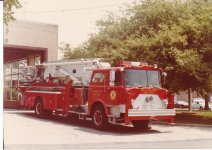Most departments don't for 1 reason or another. It's probably next to impossible to be completely compliant on everything. You go for the big things like age or numbers of equipment.Yes, and that’s probably an issue. Although if I’m remembering correctly the FDNY doesn’t actually follow the NFPA regs religiously? Like isn’t the tower ladder baskets non-compliant for instance, because the FDNY disagrees with what’s the best practice/layout?
I don't know too much about the FDNY baskets other then they come from Seagrave/Aerialscope. I know FDNY writes their specs and I presume they are NFPA certed. Whoever wins the bid would make sure of that. They'd tell them before hand hey we can't do this because of NFPA, we can do this instead. Or what do you want to do
I doubt that Seagrave or any manufacturer or dealer would allow any department to make a non compliant change to any of their units before it left their possession. Simply because the liability would come back on them if something were to happen. Now any department can go above what is required. You just can't go below the minimum that NFPA says. The other problem is warranty. You do something that causes issues, and you may be on your own.
Layouts are a different story. You can you can lay out your unit however you want. As long as your within the limits of that unit and NFPA. I know of at least 1 dept that ran a 75 foot quint that had basic pump panel controls on the turntable pedestal. Came from Eone that way.
Any of the US makers can, if they wanted to. For whatever the reason, no one has wanted to. At least as far as I know.bet Pierce could build something custom like the European unit





